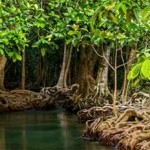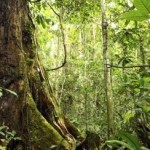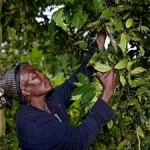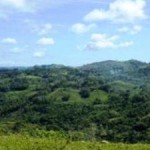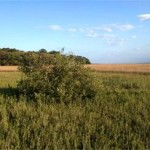Climate Change Regulation and Mitigation
- Research is increasingly pointing to the role of mangroves as significant carbon storage systems, sequestering vast amounts of carbon – about 1,000 tonnes per hectare – over thousands of years, making them some of the most carbon-rich ecosystems on the planet.
- One study carried out in the Potengi Estuary in Brazil on 1,488 hectares of mangroves found that the forest trees and sediments were retaining concentrations of heavy metals that would otherwise cost US $ 13 million to treat in a zeolite plant.
Livelihoods
- A large number of commercially important fish species such as snapper, mullet, wrasse, parrotfish, sharks and rays utilize mangroves during all or part of their lives, with the mangrove providing critical food, shelter and refuge functions.
- It has been estimated that 30 per cent of the fish caught in South-East Asia are supported in some way by mangrove forests; a figure approaching 100 per cent for highly mangrove-dependent species including some species of prawn.
- It was estimated that the annual average landing of mangrove-associated fish and blue crab in the Gulf is 10,500 tonnes, with an estimated total value of US $ 19 million to local fisheries.
Extreme Weather Events
- The complex network of mangrove roots can help reduce wave energy, limit coastal erosion and shield coastal communities from the destructive forces of tropical storms, cyclones and tsunamis.
- The mangrove-lined “hurricane holes” in the Caribbean have been a well-known safe haven for vessels for centuries, and of the 20-odd established hurricane holes recommended for boaters needing to ride out storms in the Antilles, 16 gain such a reputation because of the presence of mangroves.
- In Vietnam, extensive planting of mangrove has cost of US $ 1.1 million but has helped reduce maintenance cost of the sea-dyke by US $ 7.3 million per year.
Biodiversity Hotspots
- Mangroves form the foundation of a highly productive and biologically rich ecosystem that is home to a spectacular range of species of birds, mammals, invertebrates and fish which help to support people through fisheries, tourism and cultural heritage.
- The combination of clearance and degradation has meant that globally about 16 per cent of mangrove tree species and some 40 per cent of the animal species dependent on these ecosystems are now considered vulnerable and/or at risk of extinction. The mangroves of Australia are home to over 200 species of birds, and at least 600 different fish species are known to occur in mangroves across the Indo-Pacific region.
Recommendations
Policymaker guidelines for the improvement, management and protection of mangroves include the development of protocols to Regional Seas Conventions that promote protection and sustainable use of mangroves, and the implementation and enforcement of national laws and policies relevant to mangrove protection and management.
Others include:
- Create a Global Mangrove Fund to support “climate resilience” actions that conserve and restore mangroves, and protect the carbon stored within them;
- Encourage mangrove conservation and restoration through carbon credit markets such as REDD+, the “Bio-Rights” mechanism and corporate and private sector investments;
- Promote economic incentives such as Payments for Ecosystem Services as a source of local income from mangrove protection, sustainable use and restoration activities, and ensure beneficiaries of mangrove services can find opportunities to invest in mangrove management and restoration planning;
- Explore opportunities for investment into Net Positive Impact biodiversity offsets by the corporate and business sectors as a way to finance the protection and sustainable use of mangroves;
- Ensure that mangroves are addressed in wider Marine Spatial Planning and policy frameworks.
Click here to read/download the Full Report.
Source: UNEP.

